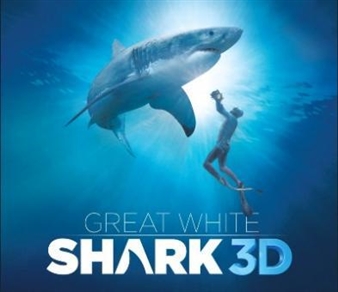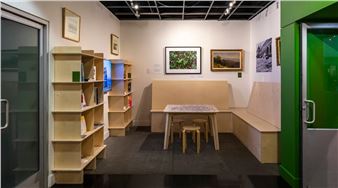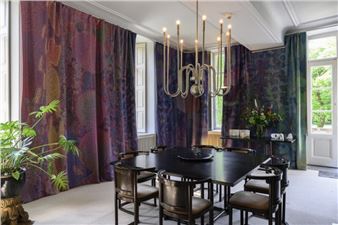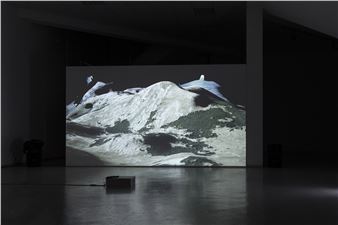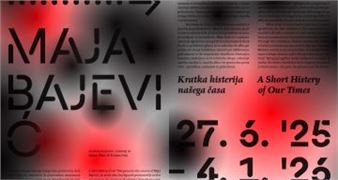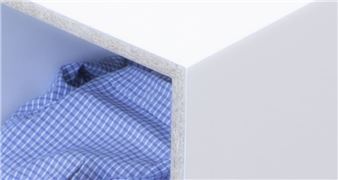Gaia Radić: Chora
With her immersive video installation Chora, artist Gaia Radić introduces a new chapter in the body of virtual worlds that perform as perceptual narratives and transform the spaces they inhabit into autopoietic worlding systems.
In Chora, the space waits in stillness for a visitor. Upon their arrival, a split point of view emerges within the expansive virtuality. Through two opposing apertures, a geological terrain, seemingly unbound by any specific site, begins to unfold. The world, comprised of interconnected lagoons, appears to overflow with an ethereal primordial liquid, keeping the space in constant flux.
This steady stream guides the visitor’s eye along the creased topology that is, in turn, slowly winding its way through the viewer as well. In this encounter, the viewer’s perceptual organs become channels through which the space reflects upon itself. Chora both shapes and is shaped by its material host and realises its generative potential when the physical and virtual realms meet through the viewer’s perception.
The heterotopic space functions as a sieve where one world is reflected and refracted into another, producing a self-referential reality that continually reforms itself. For as soon as self-formulation begins, dissipation follows. When the viewer leaves, the landscape settles, and Chora returns to its dormant state until the arrival of a new body.
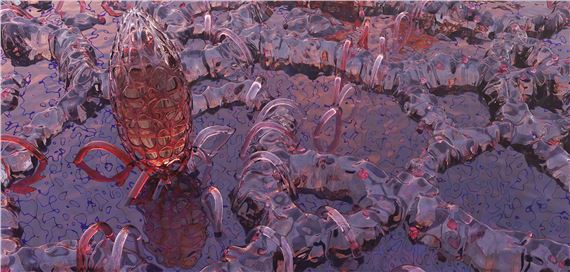
Recommended for you
With her immersive video installation Chora, artist Gaia Radić introduces a new chapter in the body of virtual worlds that perform as perceptual narratives and transform the spaces they inhabit into autopoietic worlding systems.
In Chora, the space waits in stillness for a visitor. Upon their arrival, a split point of view emerges within the expansive virtuality. Through two opposing apertures, a geological terrain, seemingly unbound by any specific site, begins to unfold. The world, comprised of interconnected lagoons, appears to overflow with an ethereal primordial liquid, keeping the space in constant flux.
This steady stream guides the visitor’s eye along the creased topology that is, in turn, slowly winding its way through the viewer as well. In this encounter, the viewer’s perceptual organs become channels through which the space reflects upon itself. Chora both shapes and is shaped by its material host and realises its generative potential when the physical and virtual realms meet through the viewer’s perception.
The heterotopic space functions as a sieve where one world is reflected and refracted into another, producing a self-referential reality that continually reforms itself. For as soon as self-formulation begins, dissipation follows. When the viewer leaves, the landscape settles, and Chora returns to its dormant state until the arrival of a new body.

 ARTISTS
ARTISTS









